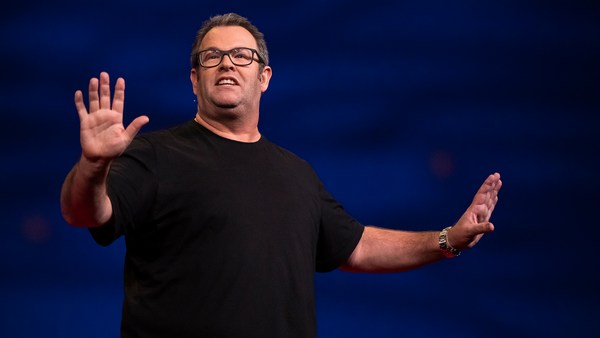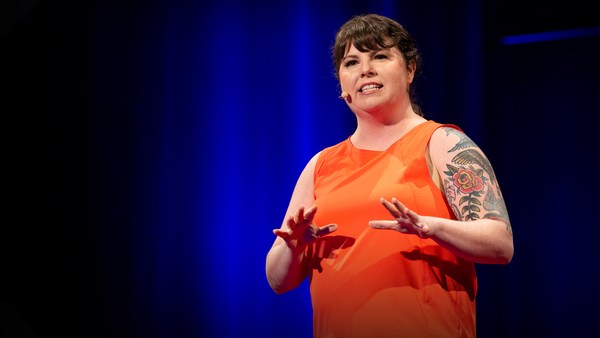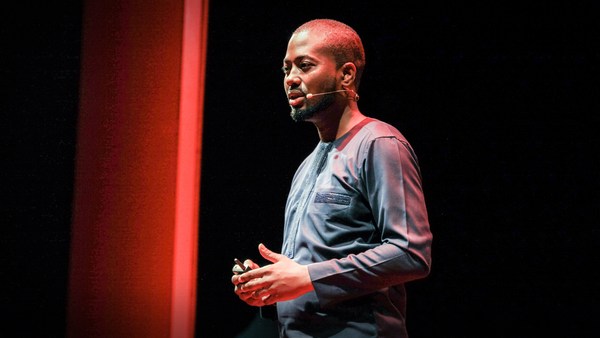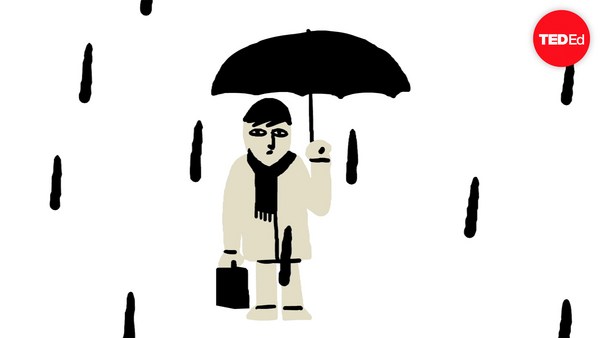Sometimes I’ll be scrolling through my social media on my phone, and I'll get an ad. But how on Earth do they know that sometimes I snore so loudly my brother needs to wear earplugs the next room over?
I think we're all familiar with this not-so-secret habit of the tech industry, where they use these complex algorithms to get to know who we are, what we like, what we don't like. Also, they can tailor ads to us and sell us things. But what if we could use this technology for good?
When I was diagnosed with depression in 2015, I had multiple intense suicidal episodes. At one point, it actually got so bad that I spent the whole day planning out how I would die later that evening. I was probably less than an hour away from ending my life when something saved me. What was it? Someone reached out.
I now know that I'm not alone, where in Australia, suicide is the leading cause of death for individuals aged between 15 to 44 years old. And for every single suicide death, there are 25 to 30 times the number of attempts. Our recent research has even shown us that less than half of people who attempt suicide will actually reach out for help prior, meaning that if we are to reach them, we need to meet them where they are.
I'm now a researcher who tries to understand, how can we do this? And the research tells us that people, most people who attempt suicide or even think of suicide, don't actually want to die. In fact, they're looking for any reason to continue on living. But what that tells us is that any sort of interruption, whether it's a tap on the shoulder, a text message or even an internet pop-up, could potentially save someone's life.
So for me, the question then becomes, how do we do this in a better way? How can we reach out in a more effective, rapid and far-reaching manner? Well, we have great hotlines and emergency services in Australia, but they still require the individual to take the first step. But another thing is, how on Earth are we supposed to know what a person’s thinking or feeling if they're not speaking up? One way is through their search behaviors. Because you and I both know we've searched things up on the internet that we would never ask another living soul.
(Laughter)
Our struggles about suicide are no exception.
And the research actually supports this. For example, in one study, the investigators went up to these individuals who had recently attempted suicide and asked to see their anonymized search history. And in fact, these individuals had searched up keywords pertaining to suicide means and methodology as well as surrounding hopelessness and loneliness. Another finding that supports this and has been found in many different countries, for example, in Japan, US and Taiwan, is that the volume of internet searches for suicide-related terms actually correlates with the national suicide rate.
In a completely different field, they found that us Australians, we spent about 40 hours a week on the internet. And 93 percent of the time it starts on a search page. So could it be that the search page be an ideal place to intervene? That's why in many countries, including Australia, if you search up suicide-related terms on the internet, you'll see a hotline banner, which is great, but the research shows that not everybody on the verge of taking their life wants to call a hotline. It's not as easy as picking up a phone and calling. Internationally, many countries still don't have a sustainable hotline, and even in Australia, if you put in a combination of keywords in the search bar, you're not going to be shown the hotline banner, but you're going to get information that might actually aid a suicide attempt.
So what if we could use the same algorithms that these tech companies use to tailor ads to us to be able to identify and reach out to individuals thinking of suicide? And we use information, their age, gender, language and geography, to do so in a deeply personal and engaging way.
So what does this look like? Imagine, Amy, a 22-year-old girl living in Sydney. She lives with her housemates, and despite her cheerful demeanor, she's recently been having thoughts of suicide. She's tried talking to her family members, but they haven't been particularly helpful. And today she turned to the search page to find a way to end it all. And as she's searching, the algorithm triggers, and on the very first line, she sees an ad that leads her to a landing page. And that landing page is designed to lead her away from a suicide attempt. Now, on that page, she's not met with overly fluffy language or with directives, "You have to do this, you have to do that," but rather, she's met with stories of other people who've been where she is. And after hearing their stories, she finally decides to seek help through one of the many options available.
We work together with a group of people that have thought of suicide, that have attempted suicide as well as lost someone to suicide, where together, we come up with a list of keywords that people are likely to search. We come up with what the ad is going to say, and we come up with the look and feel of the landing page.
Now, these ads and landing pages need to be as engaging as possible. Why is that? Because we don't know if we're only minutes away from an attempt. That's why my team and I are using extensive targeting, for example, age, language, gender and geography, to be able to reach out to these individuals in a deeply personal way where we can use the tailoring to show different ads and landing pages to different people.
So in Australia, for example, what we found is that individuals who are in their teens, perhaps, will resonate, and different imagery and different wording will resonate with them than say, somebody in their 40s or 50s. For example, what we found is that the younger generation actually really like the calming and distracting resources. They really like the breathing exercises. Whereas the older generation, they don’t want to see any of that, and they prefer direct, no-nonsense, straight-to-the-point language.
So in Amy's case, that's what she'll see. But imagine Robert, a 55-year-old man living in rural Queensland. Due to the recent economic downturn, he's been under a tremendous amount of stress. And because he's the breadwinner and the man of the family, he feels that he cannot talk to anyone. Something we know that is not true. And so he turns to the search page to find out what would happen to his life insurance policy in the event of a suicide, because he's still thinking about his family. And as he goes there, because his age group indicated they want direct, no-nonsense, problem-solving language, that's what he'll be shown. And on every single landing page, there's a welcome video. And the person welcoming you to that welcome video is somebody from your age group. This is so that for every single person in that dark time, they'll be shown an ad and landing page tailored as closely as possible to them.
Now we've run this trial in Australia and what did we find? In just 19 days, our campaign reached over 120,000 people searching up distress and suicide-related keywords. Now when they're on the page, we want them to consume content that is likely to lead them away from a suicide attempt and that is going to promote help-seeking.
Now, the industry standard for engagement is approximately three percent. That is, three percent of individuals who land on the page will engage with the page in a meaningful way. We found an engagement rate of over 22 percent. That's over seven times the industry average, suggesting there's a real need for this type of intervention. Furthermore, we're also developing pages for Aboriginal and Torres Strait Islanders as well as Mandarin-speaking populations in Australia.
Now we're doing this in several different countries in several different ways. For example, in Indonesia, where I'm from, mental health stigma is so bad that your own family might put you in a makeshift cage for having a mental disorder. And there are over 21 unique regional dialects. Now we're using geographic targeting to show different dialect pages to different locations. For example, if you live in Semarang in central Java, you'll see the ad and landing page in bahasa Java. If you live in Palembang, you're going to see the page in bahasa Palembang. Now our pages are already being used in Kidul Mountain, which is an area with some of the highest suicide rates in the entire country. And we're getting reports that it's resonating really well with people. Why is that? Because when you speak the national language, you speak to their minds. But when you speak the regional language, the language they spoke growing up, you speak to their hearts.
I'd like to leave you with this. We have an entire industry with the technology, the data and the means to reach out to people who need it. Rather than just tailor ads to them and sell them things. And this cannot replace. the role of relationships and communities. But given that most people still don't seek help prior to a suicide attempt, this could play an important piece of the puzzle in making sure that every single person in their dark time is met with an outstretched hand the same way someone saved me. Whether it’s a tap on the shoulder, a text message or even an internet ad.
Thank you.
(Applause)





